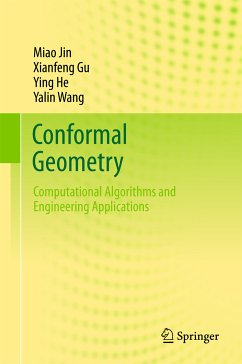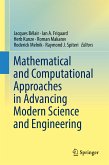The respective chapters explore fundamental problems in specific fields of application, and detail how computational conformal geometric methods can be used to solve them in a theoretically elegant and computationally efficient way. The fields covered include computer graphics, computer vision, geometric modeling, medical imaging, and wireless sensor networks. Each chapter concludes with a summary of the material covered and suggestions for further reading, and numerous illustrations and computational algorithms complement the text.
The book draws on courses given by the authors at the University of Louisiana at Lafayette, the State University of New York at Stony Brook, and Tsinghua University, and will be of interest to senior undergraduates, graduates and researchers in computer science, applied mathematics, and engineering.
Dieser Download kann aus rechtlichen Gründen nur mit Rechnungsadresse in A, B, BG, CY, CZ, D, DK, EW, E, FIN, F, GR, HR, H, IRL, I, LT, L, LR, M, NL, PL, P, R, S, SLO, SK ausgeliefert werden.









